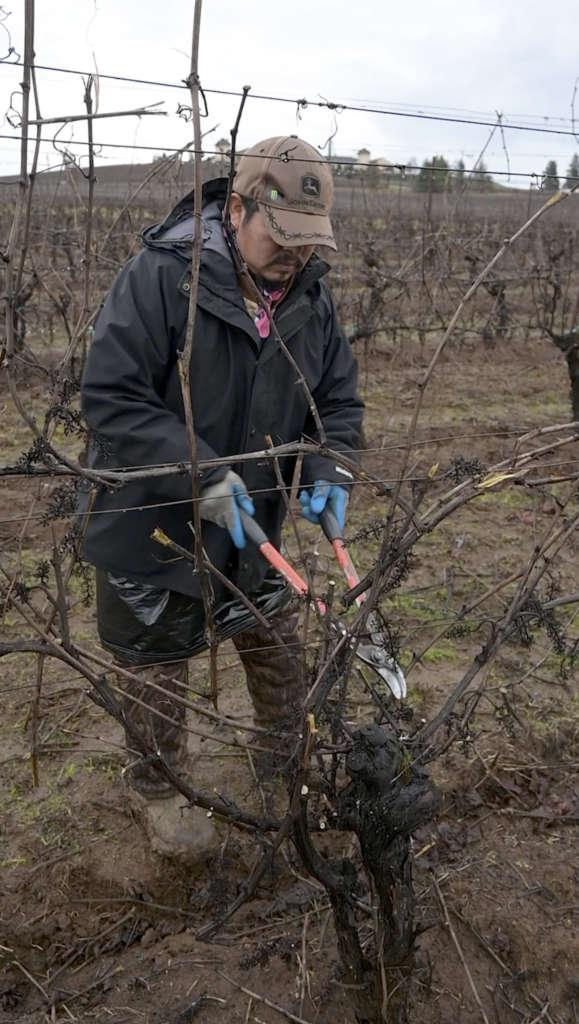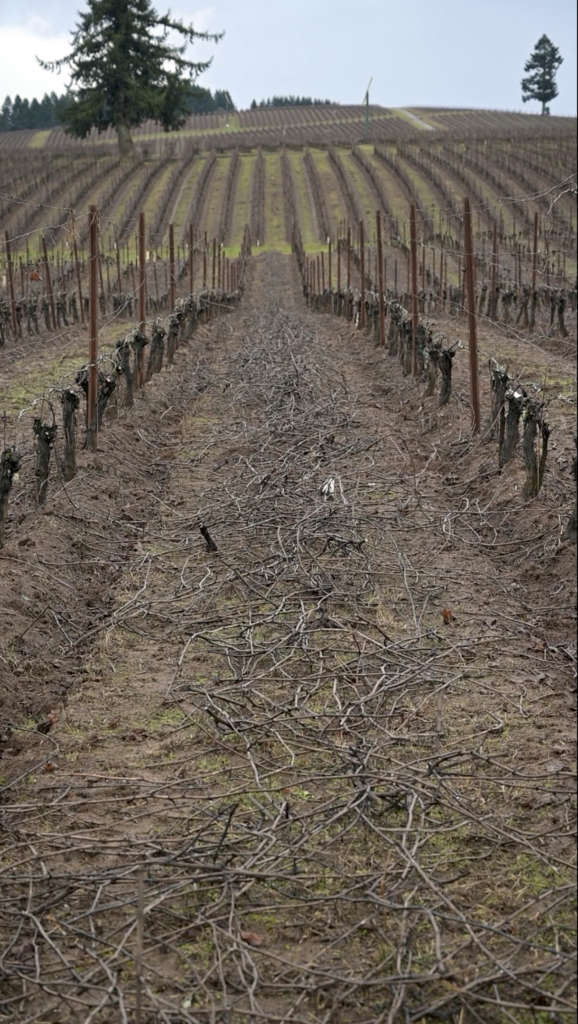From December through early March, when the vines are dormant, crews get busy pruning King Estate’s 460 acres of grapevines. Vineyard Manager Meliton Martinez has spent 30 years tending King Estate’s vines; recently he took some time to walk us through the pruning process. Spoiler alert: It’s more complicated than it looks. But first, let’s start by finding out why we prune in the first place.
“Pruning helps limit the amount of fruit that the vine can bear, because all these buds can potentially grow and have clusters,” Mel says as he points to small nodes on the canes. He is standing in a vine row, a pair of small clippers in his hand, next to a 30-year-old trunk sprouting several canes. “When we are pruning, we limit the number of clusters but at the same time we position where the fruit is going to be.” Limiting the clusters helps focus the vines’ energy on growing big, plump, juicy grapes, and positioning them helps assure they’ll have enough space and light to grow. “If we leave all of those,” he says, gesturing at canes sprouting from the trunk, “then we will have clusters everywhere.
Keeping King Estate Vines in Tip-Top Shape
“The most important step (in pruning) is selecting the fruiting cane and the spur,” Mel continues. Choosing a good cane – one that is mature and has buds spaced at optimum intervals for best fruitfulness – is key to the pruning process. And that requires having skilled workers who walk the rows and choose the best fruiting canes for this season. The canes need not only to have well-spaced buds but also must be long enough to fill the wire.

These experienced workers make the first pass through the vineyard, deciding which canes to cut, how many buds to leave on the vine and how the vine will be shaped. As part of this process they are identifying which renewal spurs to retain for growing shoots that will be trained on the wires and become fruiting canes the following season.
The Growing Cycle Continues
Everything else is trimmed away, using tools called loppers. Another crew will come through the rows again, pulling all the brush out of the vines and placing it in the vine rows to eventually become part of the soil once again. They cut the canes to the right length to tie them to the wires, all setting the stage for a successful growing season and another bountiful harvest.
To learn more about Mel Martinez, visit our feature on him at this link.

